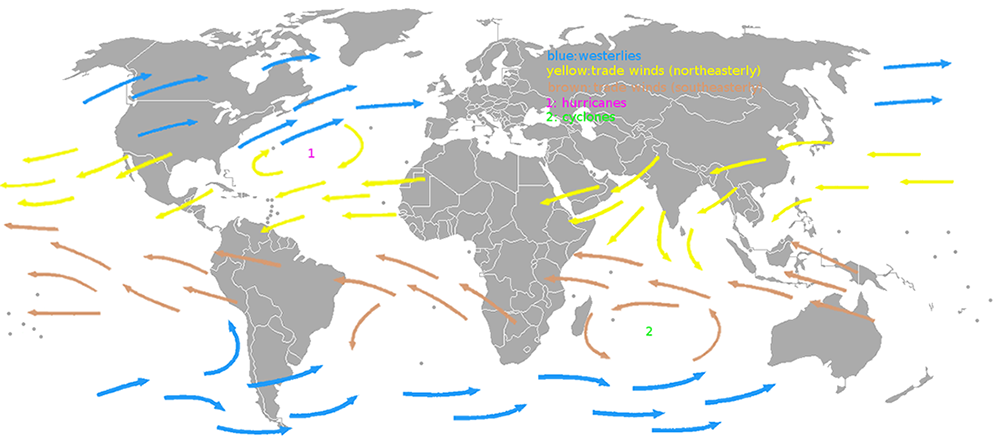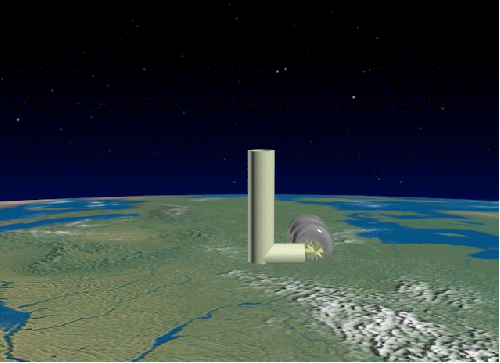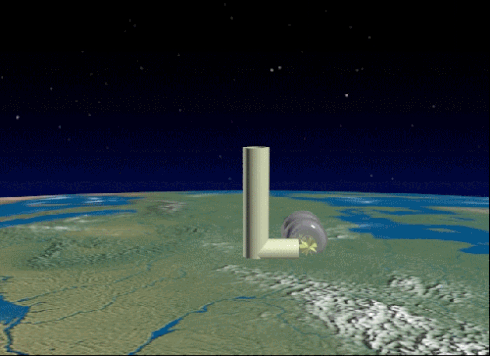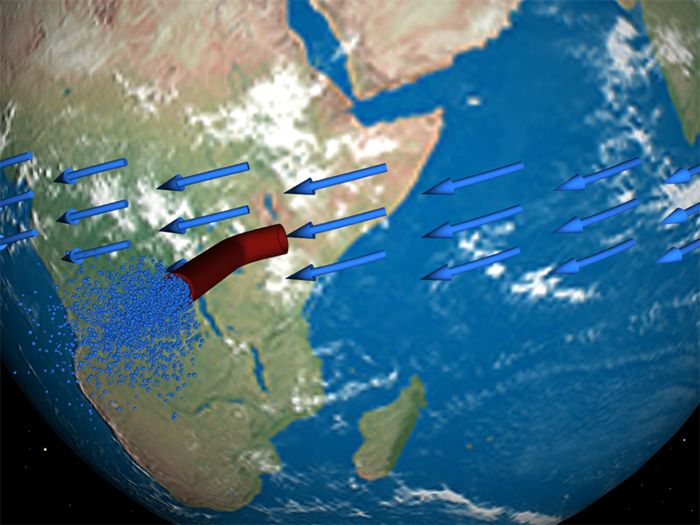OpenSpace 6: Difference between revisions
No edit summary |
No edit summary |
||
| Line 26: | Line 26: | ||
What should be the height of this tube? Of course, the higher the tube is the better it is. As we think its height should be approximately 100 km, exactly this altitude is considered to be the boundary of space. If the tube is lower, then the air stream released from the tube will be scattered in the atmosphere prematurely. | What should be the height of this tube? Of course, the higher the tube is the better it is. As we think its height should be approximately 100 km, exactly this altitude is considered to be the boundary of space. If the tube is lower, then the air stream released from the tube will be scattered in the atmosphere prematurely. | ||
[[Image: 11opt.gif]] | [[Image: 11opt.gif]] | ||
Revision as of 14:59, 19 August 2014
Removing the space debris by means of vertical artificial air stream
Author: Mr. Giorgi Lobzhanidze
Address: Tbilisi, Republic of Georgia, Europe
Email: mailto:giorgi9@gmail.com
The space debris is the objects in orbit around Earth created by humans that no longer serve any useful purpose. They consist of everything from entire spent rocket stages and defunct satellites to explosion fragments, paint flakes, dust and slag from solid rocket motors, and other small particles that are much more dangerous since it is more difficult to oversee them than large objects.
Since the beginning of the Space Age in 1957 a great amount of satellites have been sent into space and this increasing number is/will be (especially in future) a great problem. According to some assessments the space debris belt will very soon make problems even for putting the satellites on the orbit around the Earth. As known, more and more countries are getting involved in space exploration and therefore number of objects (both active and “dead” satellites) in space will increase rapidly. The worst thing is that the satellites are colliding to each other and thus creating more and more little objects (their fragments) around the Earth that are much more difficult to deal with than with big objects. This effect is known as “Kessler Syndrome” 1 2. One of such collide occurred in 2009, 10 of February when the inactive satellite Kosmos-2251 collided with active one Iridium 33 above the northern Siberia with the speed of 42 120 km/h. This collision destroyed both satellites and gave birth to one more space debris cloud consisting of numerous little objects (there are at least one thousand objects in this cloud with the size of more than 10 cm) 3. If this tendency continues, if the critical density where the creation of new debris occurs faster than the various natural forces that remove these objects from orbit in space is reached and overcome, apparently after several ten years there will be some dust belt around the Earth.
As well-known the satellites placed on the Low Earth orbit are falling down on our planet due to atmosphere’s insignificant resistance. If we able to increase this resistance then the satellites (space debris in our case) will fall on the Earth down much sooner. How this can be done? Surely, we cannot raise the whole atmosphere upwards, but its little part can be actually raised. This can be achieved if we build a gigantic vertical tube that will enable us to pump the atmospheric air upwards, and then the satellites will go through such stream, lose their kinetic energy and eventually fall down.
The air stream should be quite broad after leaving the tube and actually this will definitely be so because we know from Physics that the air generally tries to occupy all the space left to it. So, generally the narrow stream cannot be created and by the way this would be unacceptable since the narrow stream would cut the satellites into two pieces and we do not absolutely need this. It is much better if the “blunt” resistance will slow down the satellite.
The speed of the air stream leaving the tube should be enough in order it to reach the several km altitudes (the vast majority of the space debris is located exactly there) and then to return to the Earth. Of course, under such situation the speed of the air stream should be less then Escape Velocity-11.2 km/sec. We should also point out that the stream returning back to the Earth will also work and slow the satellites down (However, it should be noted that this is correct only for those satellites the orbits of which has got 0° inclinations). Also, it is remarkable that the returning stream will be much broader since just after leaving the tube it will be widened due to satellites’ collision which will scatter stream’s molecules and air’s natural expansion as it was mentioned in the previous paragraph.
We should note that the air stream will not return to the same place where it was released from on the Earth but it will return to the place located a bit westwards. The reason of it is following: the air stream in the tube is moving vertically upwards but after it leaves the tube the Earth will keep rotating around its axis and after some amount of time the air stream will hit other place located westwards on the Earth. Eventually, the path of this stream will resemble curve line.
What should be the height of this tube? Of course, the higher the tube is the better it is. As we think its height should be approximately 100 km, exactly this altitude is considered to be the boundary of space. If the tube is lower, then the air stream released from the tube will be scattered in the atmosphere prematurely.
The satellite orbits the Earth
The satellite is slowed down in upward moving air stream
Surely, it will cost too much to move the necessary amount of air in this tube vertically. To solve this problem at least partly we should use the winds blowing in the Earth’s atmosphere, particularly the Trade winds.
The trade winds are the prevailing pattern of easterly surface winds found in the tropics, within the lower portion of the Earth's atmosphere, in the lower section of the troposphere near the Earth's equator. The trade winds blow predominantly from the northeast in the Northern Hemisphere and from the southeast in the Southern Hemisphere, strengthening during the winter and when the Arctic oscillation is in its warm phase. Historically, the trade winds have been used by captains of sailing ships to cross the world's oceans for centuries, and enabled European empire expansion into the Americas and trade routes to become established across the Atlantic and Pacific oceans4.

So, all we need to do is to let these winds to enter the tube where they will move upwards due to these winds’ constant pressure. Of course, the special calculations are needed in order we to know if this pressure is enough to force the air stream cover several hundred km altitude (100 km in tube and plus several hundred kilometers that should be covered by the air stream after leaving the tube in outer space) or not. In any case such approach will enable us to solve this problem at least partly.
References:
1. http://en.wikipedia.org/wiki/Kessler_syndrome
2. http://webpages.charter.net/dkessler/files/KesSym.html
3. http://www.space.com/news/090211-satellite-collision.html


